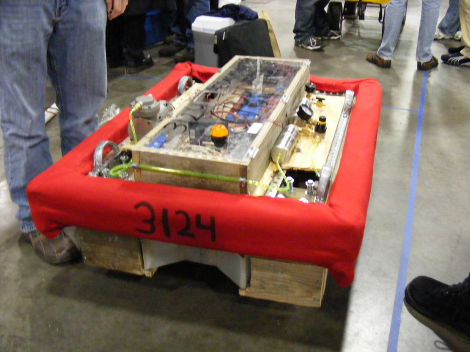I just finished my 6th season of FIRST Robotics (would be 7 but i took an effective year off). This year's game sponsored by Disney (for marketing reasons). is STRONGHOLD. As seen below.
Looks pretty fun, and painful for field reset in my opinion. Anyways starting a FIRST team while in high school (3647) as taught me a lot of the engineer I know these. I ended up getting sucked back into it when I was asked to mentor 2485 WARLords. I was heavily involved in the 2014 season, took 2015 off due to work and school and came back in 2016 last minute.
First is probably the largest STEM type robotics program in the USA for high schoolers, after being a student, mentor and volunteer in the program for years I've had quite a few thoughts about it probably something I'll write up in another post. Anyways mentoring has almost taught me more than being a student on the team, 2485 being a mentor heavier team I get to do a lot of direct engineering and fab on the robot with an emphasis on making sure students are 100% involved and behind the process. This year's game is interesting due to the the points breakdown and the obstacles one has to drive over. Also in my opinion this has lowered the bar of entry as a robot that is good at driving over stuff can score points directly for the alliance.
 |
| The standard rookie drivetrain only robot... we all see and love. |
But as 2485 is a team that wants to win, we get to do a bit more then just drive. With the strategy team leading the thoughts on what the robot should do and what are most important for winning matches/regionals/champs, there's a lot of debate on how to play the game. TLDR we decided on a tank treaded robot for driving over stuff, low profile to fit under the low bar, some fancy quick intake system/arm that also is used for pushing stuff, and a shooter to make any shot we desired.
First line of work was building the drivetrain, we ended up using a sponsor for most of the parts, Brecoflex. They make a line of self tracking belts with a the ability to add a backing material on the belt, now usually used as conveyor material these also happen to make good robot treads. a bit a bit pricy at $250 a belt and $40 a pulley.
With 5 pulleys on each side the center 2 are dropped and the rear ones are the driven. Drivetrain was mostly custom, including the gearbox powered with 4CIMs + 2 775pros. Overall this system has worked out pretty well. With tensioning issues solved by a egg-y cam type tensioner that runs on bearings in the middle of the belt run.
The intake was designed based on the oldddd Team 47? bi-directional intake that was popular in 2012. Using a main vertical string of polycord to suck the ball into the robot, but with side rollers with a crossed polycorb belt to pull a ball in from the side to the center. Vex Pro VersaPlanetary runs the show (great little gearboxes IF assembled right).
This team also likes its composites, the CF is a one/two layer wrap around the alum welded frame. And the Kevler is wrapped around a UHMW tube lathed down. Though at this point it's mostly for looks and for the experience of the students. The front roller was later replaced with one without the kevlar, due a small re-design.
Lifting the intake is a 140:1 gearbox and a 2:1 chain stage. This proved tricky since we did not have as much mounting support for the gearbox as desire and we wanted to get rid of as much blacklash as possible.
As one can tell by the lack of coating on the gb... it was re done in 14 hours during the last days of build season due to original um sucking as I would put it lightly. (Yep my oops... of the season). With a single 775pro driving it through a base VersaPlanetary stage it worked out pretty well. And as more than enough power to lift and hold the arm. Lastly a MA3 US digital encoder attached directly to the arm runs the show.
For the shooter design we went a safe route, simply flywheel and compression. 2 775 pros in VPs spin up 3 colsons up to 6000rpms and a delrin rail system guide the ball. It has adjustable release angles and folds down to clear the low bar. It took us a lot of effort to get everything to spin happily, the gearbox and belt and bearings from Vexpro were finicky to say the least, as I said earlier the VersaPlanetarys are great if you put them together just right which can be challenging.... also in these high RPM systems we found looser belt tensioning is better than tight and lasty chinese bearings can suck (ABEC ratings exist for a reason). Using SS open bearings with a ABEC-1 rating worked the best and we are able to get to speed quickly.
A "teeter totter" pneumatic operated ball holder/handler fed the single ball into the shooter when we desired to. These parts of the robot were the ones I was least involved with in the design and fabrication bits so I kind of have a lack of photos here.
That all combined together results in Orion.



No comments:
Post a Comment